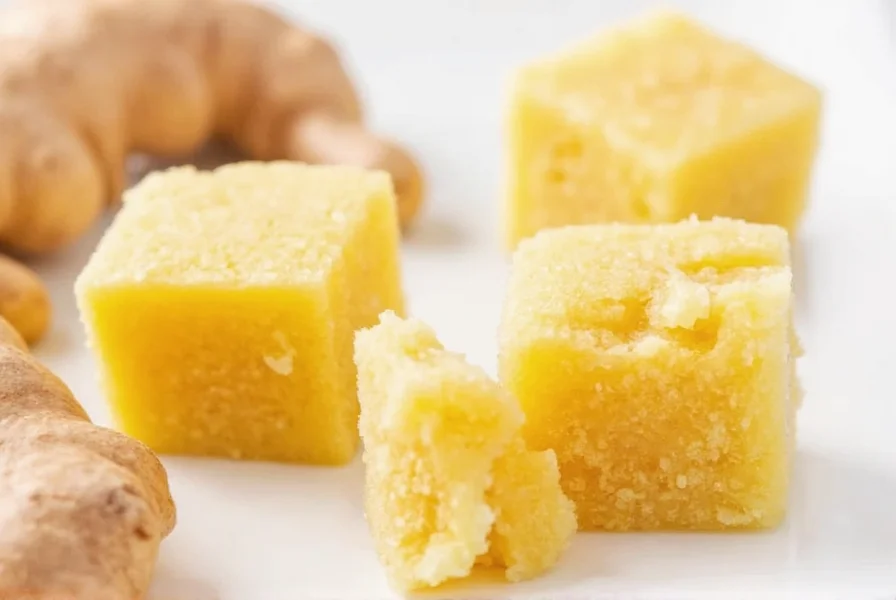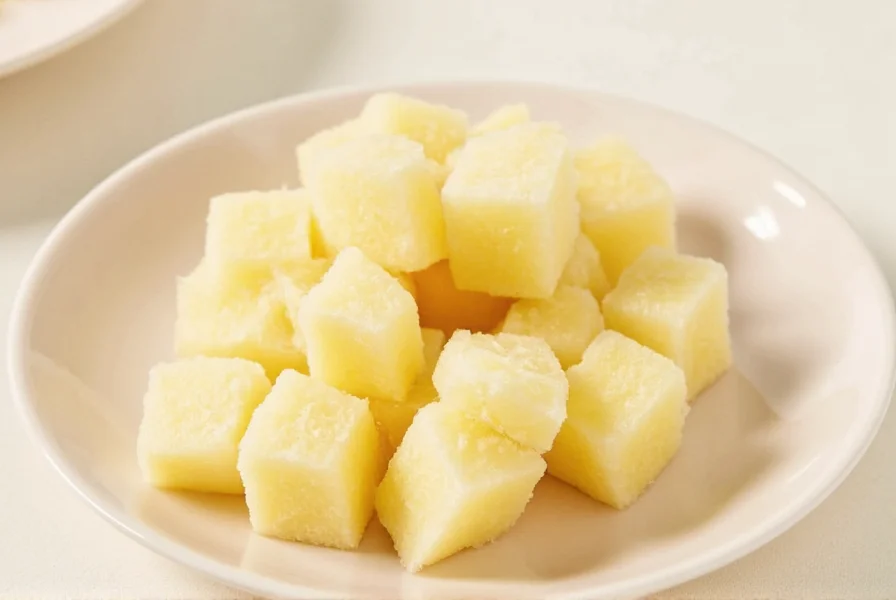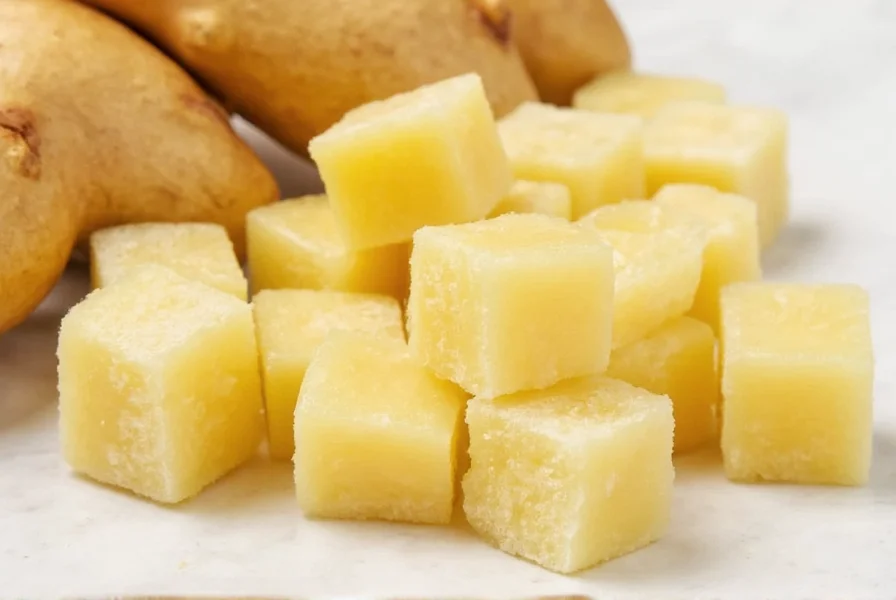For home chefs and meal preppers, ginger often presents a storage dilemma. Fresh ginger root spoils quickly, develops mold, or becomes fibrous within days of purchase. Frozen ginger cubes solve this problem elegantly while maintaining nearly identical flavor and nutritional profiles to fresh ginger. This practical preservation method has gained popularity among both professional chefs and home cooks seeking kitchen efficiency.
The Science Behind Freezing Ginger
Freezing ginger doesn't significantly alter its chemical composition. The active compound gingerol, responsible for ginger's distinctive flavor and health benefits, remains stable during freezing. Unlike many vegetables that suffer texture changes when frozen, ginger's fibrous structure actually benefits from the freezing process. When frozen ginger is grated directly from the freezer, it produces finer, more consistent shreds than fresh ginger, making it ideal for sauces, marinades, and dressings.
Creating Perfect Frozen Ginger Cubes at Home
Making your own frozen ginger cubes ensures maximum freshness and avoids potential additives found in some commercial products. The process requires minimal equipment and takes less than 15 minutes:
- Peel fresh ginger root using a spoon (more efficient than a peeler)
- Grate the ginger using a microplane or fine grater
- Portion the grated ginger into tablespoon measurements
- Place portions in silicone ice cube trays
- Freeze for 2-3 hours until solid
- Transfer cubes to airtight freezer bags with date labels
This homemade method for freezing ginger in cubes preserves maximum flavor while providing precise measurements for recipes. For those preferring larger pieces, whole ginger chunks can be frozen after peeling and cutting into 1-inch sections.
| Storage Method | Shelf Life | Flavor Retention | Convenience Factor |
|---|---|---|---|
| Refrigerated (whole) | 2-3 weeks | Good | Moderate |
| Refrigerated (peeled) | 1 week | Fair | Low |
| Frozen (grated cubes) | 6 months | Excellent | High |
| Frozen (whole chunks) | 3 months | Very Good | Moderate |
Practical Applications in Cooking
Cooking with frozen ginger cubes offers several advantages over fresh ginger. When added directly to hot liquids like soups, stews, or tea, frozen ginger dissolves completely without requiring additional preparation. For stir-fries and sautéed dishes, simply drop the frozen cube into hot oil—the intense heat creates instant steam that helps release ginger's aromatic compounds.
Professional chefs appreciate that frozen ginger cubes provide consistent measurements, eliminating the guesswork of estimating "a thumb-sized piece" or "a knob of ginger." This precision proves particularly valuable when following recipes that require specific ginger quantities for balanced flavor profiles.

Frozen Ginger vs Fresh: Understanding the Differences
While frozen ginger cubes offer remarkable convenience, understanding when to use them versus fresh ginger enhances culinary results. Frozen ginger works exceptionally well in cooked applications where texture isn't critical—soups, sauces, baked goods, and beverages. The freezing process actually breaks down some fibrous tissue, making the ginger more readily release its flavor compounds during cooking.
For raw applications like sushi accompaniments, fresh ginger remains preferable due to its crisp texture. However, for most cooking purposes, the difference in flavor between properly frozen ginger and fresh ginger is negligible after just 30 seconds of cooking time.
Troubleshooting Common Frozen Ginger Issues
Even with proper technique, home cooks sometimes encounter challenges with frozen ginger cubes:
- Moisture accumulation: Blot grated ginger with paper towels before freezing to prevent ice crystals
- Flavor transfer: Store ginger cubes in airtight containers to prevent absorbing freezer odors
- Clumping: Flash-freeze individual portions before transferring to storage bags
- Quality degradation: Use within 6 months for optimal flavor (though safe indefinitely)
For those concerned about does freezing ginger affect flavor, research indicates properly stored frozen ginger maintains 95% of its volatile compounds compared to fresh ginger when used within six months.
Maximizing Your Frozen Ginger Experience
The best way to store ginger cubes involves multiple protection layers. First, freeze portions in silicone trays, then transfer to heavy-duty freezer bags with air pressed out. For extended storage beyond three months, consider vacuum sealing. Label each package with the preparation date to track freshness.
When incorporating frozen ginger into recipes, add it early in the cooking process to allow complete flavor integration. For cold applications like smoothies or salad dressings, briefly run the frozen cube under warm water to soften the surface before grating.

Conclusion
Frozen ginger cubes represent a simple yet transformative kitchen technique that reduces food waste while ensuring consistent ginger availability. By understanding the proper methods for preparation, storage, and usage, home cooks can enjoy the convenience of having ginger readily available without compromising on flavor or nutritional benefits. This practical approach to preserving ginger aligns perfectly with modern cooking priorities of efficiency, sustainability, and consistent results.
How long do frozen ginger cubes last in the freezer?
Properly stored frozen ginger cubes maintain optimal flavor and quality for 6 months. When stored in airtight containers with minimal air exposure, they remain safe to eat indefinitely, though flavor gradually diminishes after the six-month mark. For best results, label containers with preparation dates and use within this timeframe.
Can I use frozen ginger cubes directly in recipes without thawing?
Yes, frozen ginger cubes work best when added directly to hot dishes without thawing. The intense heat of cooking immediately begins releasing the ginger's flavor compounds. For cold applications like smoothies or dressings, briefly run the cube under warm water to soften the surface before grating for easier incorporation.
Does freezing ginger destroy its nutritional value?
Freezing preserves nearly all of ginger's nutritional compounds, including gingerol, the primary bioactive component. Studies show frozen ginger maintains 95% or more of its original nutritional profile compared to fresh ginger when properly stored. The freezing process may even increase the bioavailability of certain compounds by breaking down plant cell walls.
What's the best way to measure frozen ginger for recipes?
Standardize your frozen ginger portions during preparation by measuring grated ginger into tablespoon increments before freezing. One tablespoon of frozen grated ginger equals approximately one inch of fresh ginger root. This precise measurement system eliminates guesswork when following recipes that specify ginger quantities.
Can I freeze whole ginger instead of making cubes?
Yes, you can freeze whole ginger pieces, though this method offers less convenience than pre-grated cubes. Peel and cut ginger into 1-2 inch chunks before freezing in airtight containers. Whole frozen ginger requires grating while partially frozen, which works well but takes slightly more effort than using pre-portioned cubes. This approach maintains texture better for applications where fibrous ginger is desirable.











 浙公网安备
33010002000092号
浙公网安备
33010002000092号 浙B2-20120091-4
浙B2-20120091-4